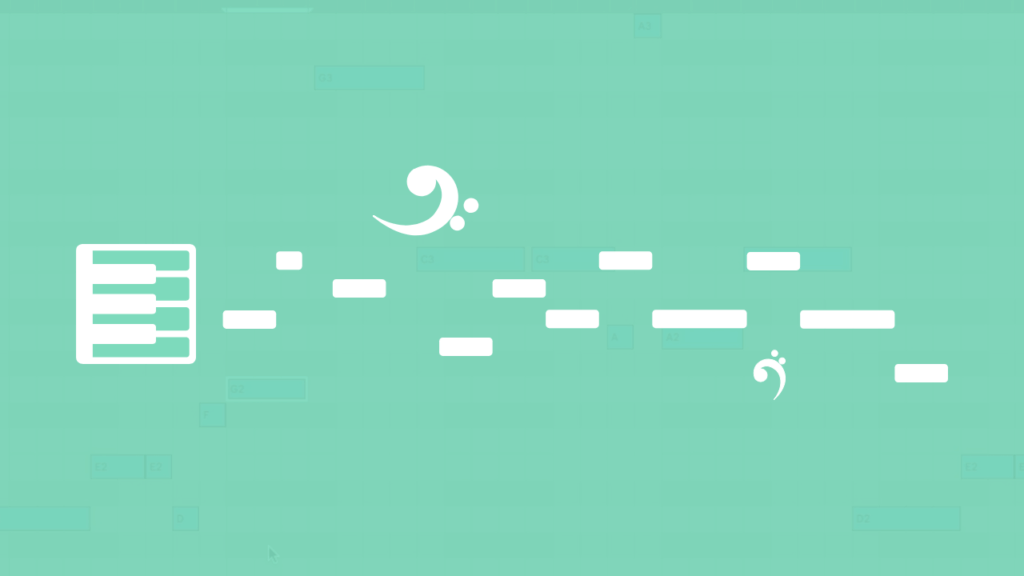Bass lines are fundamental in electronic and dance music.
Yet, most producers woefully underuse this powerful element in their music.
They end up with boring basses that follow their chords, and that repeat throughout the track.
I’ve even been guilty of this myself, but today I’m going to show you 9 tips that can help you write better bass lines and spice up your low end.
Let’s take a look.
Tip 1: Play with the Rhythm
As previously mentioned, most producers just follow the root note of their chord progressions and end up with a safe yet boring bassline.
One way to switch it up without doing too much is just by adding rhythm to those notes, even if they play the same pitch.
Take this example:
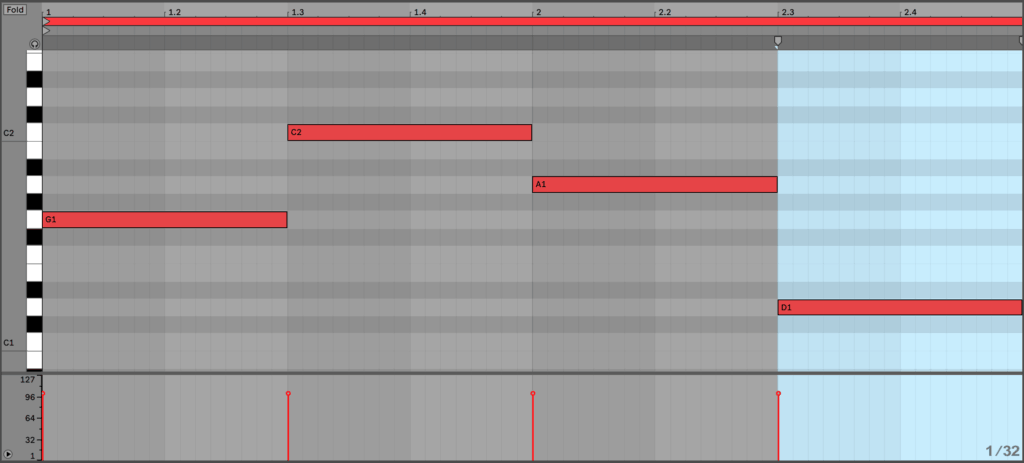
Sounds pretty stale, huh?
Simply by adding a second note in this pattern, you get something with a bit more ‘movement’ to it.
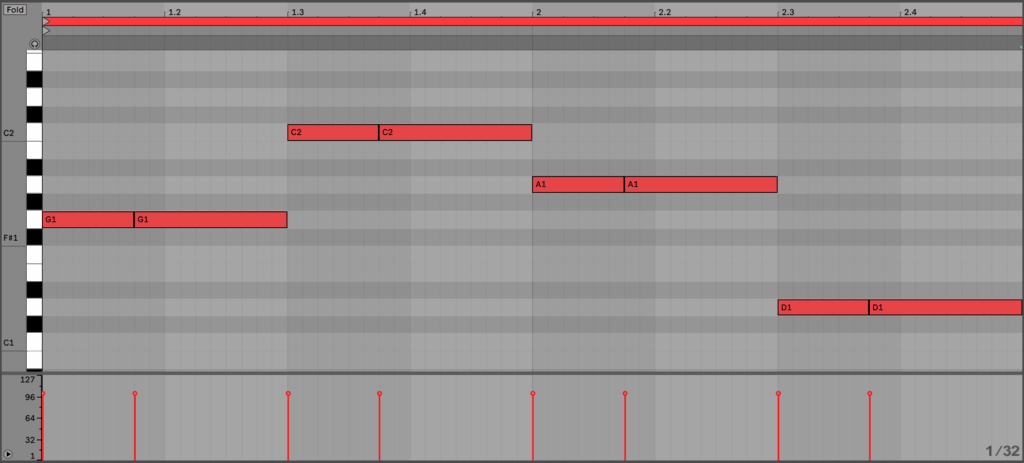
This works because, traditionally speaking, bass instruments wouldn’t have a long enough sustain to hold a note for as long as a synth bass would.
So instead, they just played an interesting rhythm. After all, the bass is technically a ‘rhythm’ instrument.
Even though genres like trance have one note held for long periods of time, it’s the note repetition that drives the tracks and adds interest.
And that’s only the basics.
Tip 2: Add Syncopation
Syncopation is a staple in many genres of electronic music for a reason – it adds such a nice groove to any drum pattern.
Wikipedia defines it well so I’ll show you the definition:

The simple formula for writing syncopation is as follows:
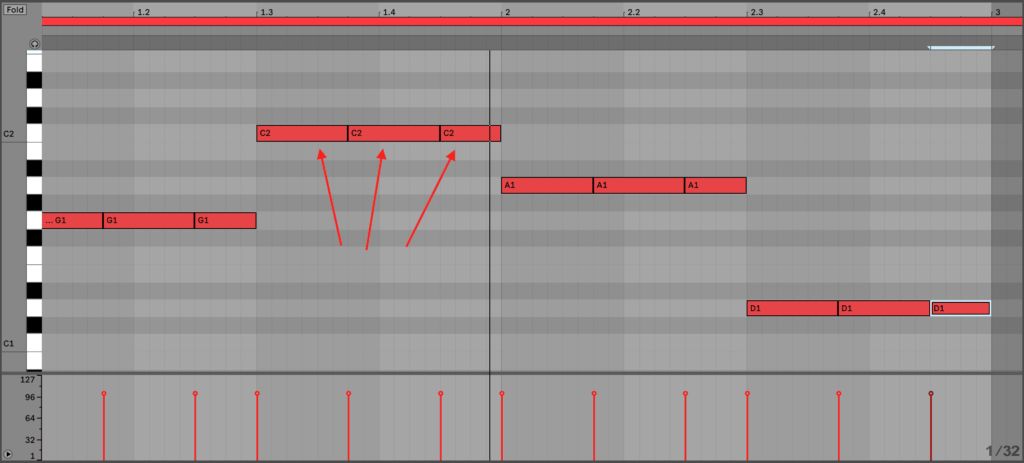
Syncopation as a similar feel to using a triplet grid, but it works with a 16th grid, allowing it to sound interesting yet rhythmically tight.
It gives it a feel that two different tempos are playing at the same time, but they’re not, which is why it sounds so damn cool.
It can be done at half or double times this speed as well, so feel free to use it on other rhythmic elements other than bass, like fast hi-hats.
Tip 3: Play Notes other than The Root
Shock horror, but did you know you didn’t have to follow the root note of your chords?
All jokes aside, I get the temptation to stick to what works. Playing the wrong bass note, even in the right key, can muddy up your low end.
But if you stick to the chord tones (the notes belonging to the chord playing in a given moment), then you’re likely to come up with interesting yet practical results.
Take this bassline from before:
We can add some note changes towards the end of each chord, just to add some extra motion.
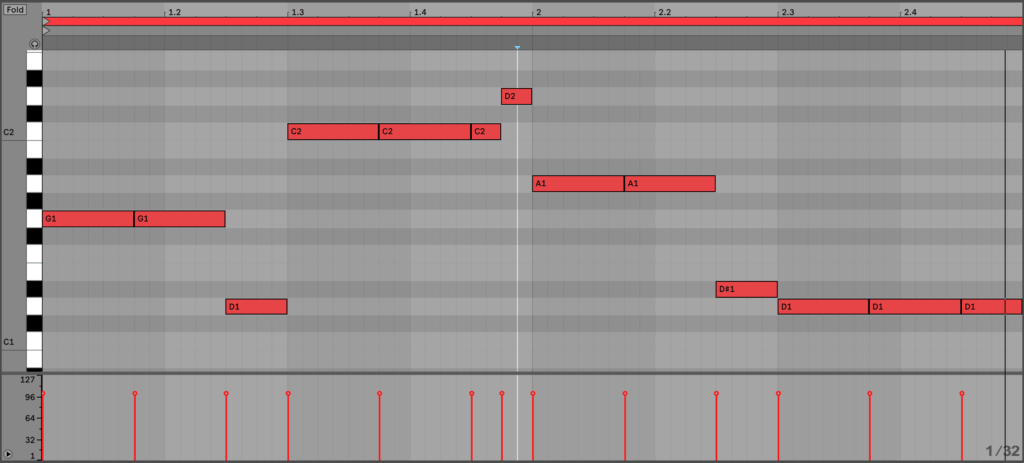
This sounds particularly cool when we combine it with some chords and drums.
Tip 4: Add Octave Jumps
Octave jumps are one of my favorite tips, because they’re simple yet so effective.
Just move between an octave on the same bass note to add motion and a different feel. Moving up tends to increase energy, which can be great for builds, but moving down can help introduce a new section or repeat.
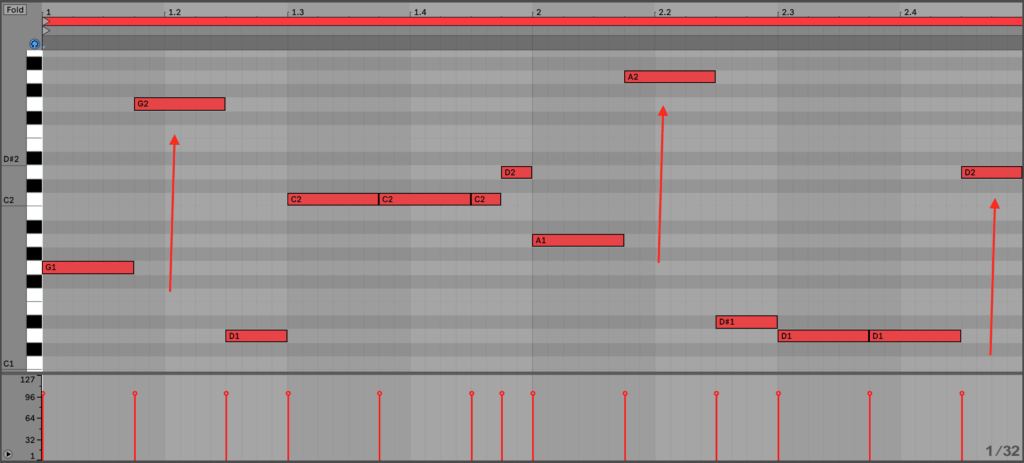
See how it adds a greater degree of movement so easily?
Extra tip: If you’re on Ableton Live, a quick shortcut to move notes up or down an octave is Shift + Up/Down Key.
Tip 5: Rhythm and Timing (Swing)
We’ve already talked about playing with the rhythm, but what if we took it a step further?
Let’s introduce the concept of swing.
A few musical devices you can use here are:
- moving notes off the grid
- silence
- note repetition
- offbeat emphasis
- note slides
The combination of these can be used to create a human feel that is normally not achieved by programming in simple notes.
Take this example here where I use a combination of all four of these elements.
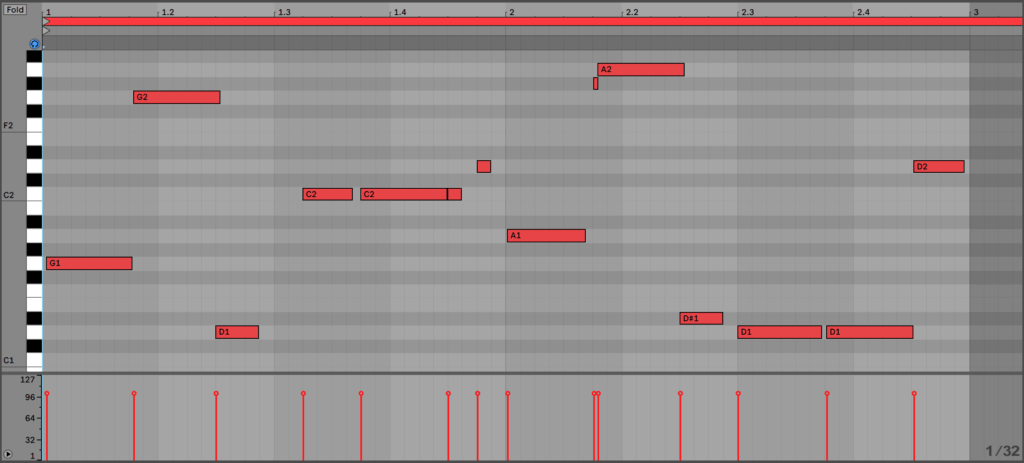
This tip varies between genres, so it’s worth doing some experimentation of your own here.
For example, if you’re making house or other 4-on-the-floor music, then using groove and swing presets are a great way to add a nice timing to your drum patterns.
Tip 6: Amp + Filter Envelopes
This is more of a bass sound design tip, but how your bass patch sounds makes a big difference on the feel of your bass line.
If you’re new to the basics of sound design, a synth envelope is usually made up of four parts:
Attack – Decay – Sustain – Release
Hence, the term ‘ADSR Envelope’ is used to describe them.
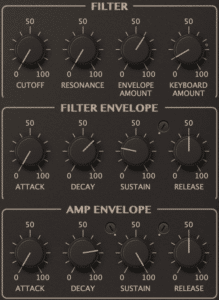
Attack controls the pluckiness or softness of the beginning of a sound.
Decay determines how long the sound will take to decrease in volume after the attack stage.
Sustain determines the level of volume that the decay will drop to.
Release determines how long the note will take to fade to silence once the key is no longer being held.
A plucky bassline is going to require different note programming to a soft, sweeping bass.
Tip 7: Note Length
It’s not just about when you play a note, but how long also matters.
Most producers tend to program in notes so they hold out the full length until the next note is played, with no silence.
There’s no problem with this, but it doesn’t leave much room for interest, so feel free to play around with this a bit more.
Dada Life have been quoted as saying that they will spend many hours deciding on the length of their notes.
Notice when I shorten the notes in the previous bassline, how it affects the feel of the beat:
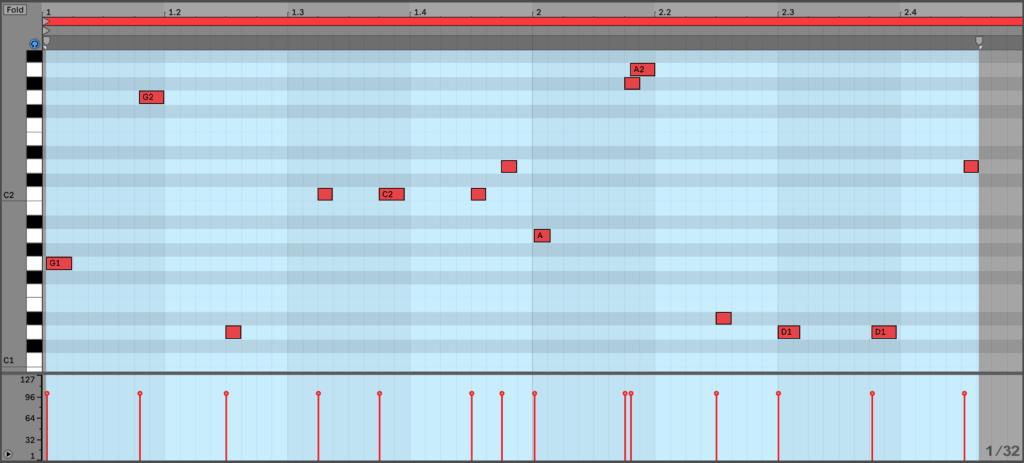
It feels a bit ‘tighter’ but emptier, as opposed to the previous one which fills out the mix a bit more.
Tip 8: Introduce Melodic Fills
This is one of the most overrated techniques, but it works very well, especially if you want your bassline to be a focal point in your track.
Basically, you treat your bass like a melody (in certain parts) and allow it to move between notes faster and with feeling.
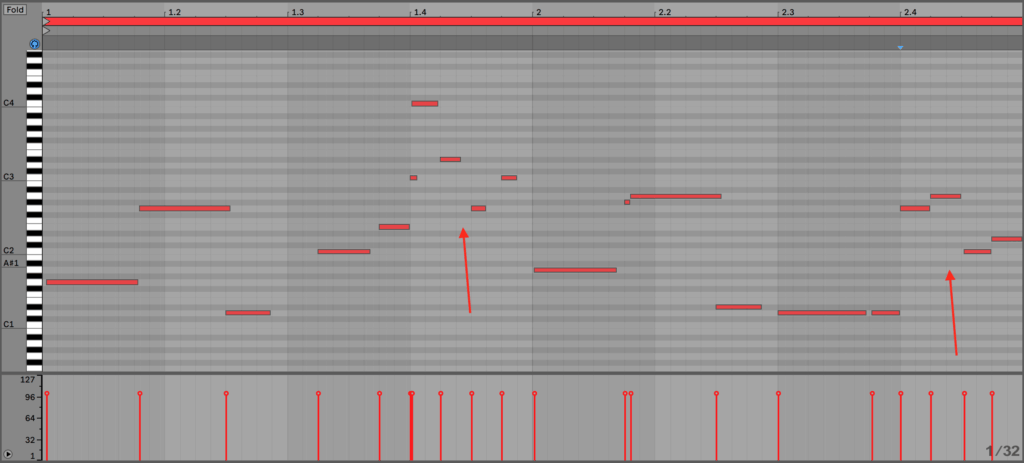
You may have to play in the upper registers in these parts in order to avoid mud, but it’s a killer technique that traditional bass players use all the time to add interest to a song, especially when the melodic elements might be taking a break.
Tip 9: Subtle Development + Variation
So you’ve got a sick bass loop using all the techniques in this article, now do you just repeat it over and over?
You can, but you also can make it more interesting.
For example, you could change every 2nd repeat to have a different sense of call and response, or you could add a one-off magic moment, or even completely add a new pattern in a new section.
All of these are interesting techniques that can take your bass line further in a macro sense, not just a micro sense.
Take this example here:
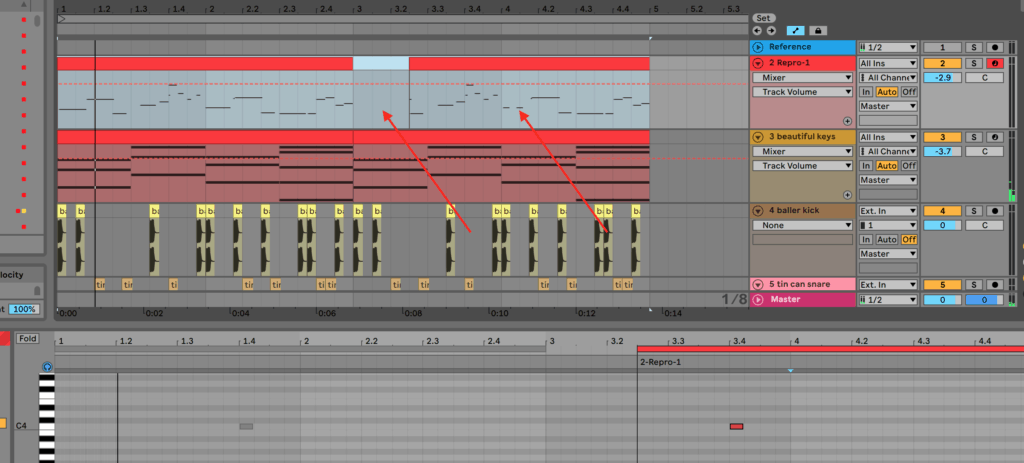
All I’ve done is add a bit of silence on the second repeat and an extra swung repetition on bar 4. But subtle changes like this keep things interesting.
Need More Tips?
Why not check out some of our other articles?
If you have any questions, please reach out to me at [email protected].

